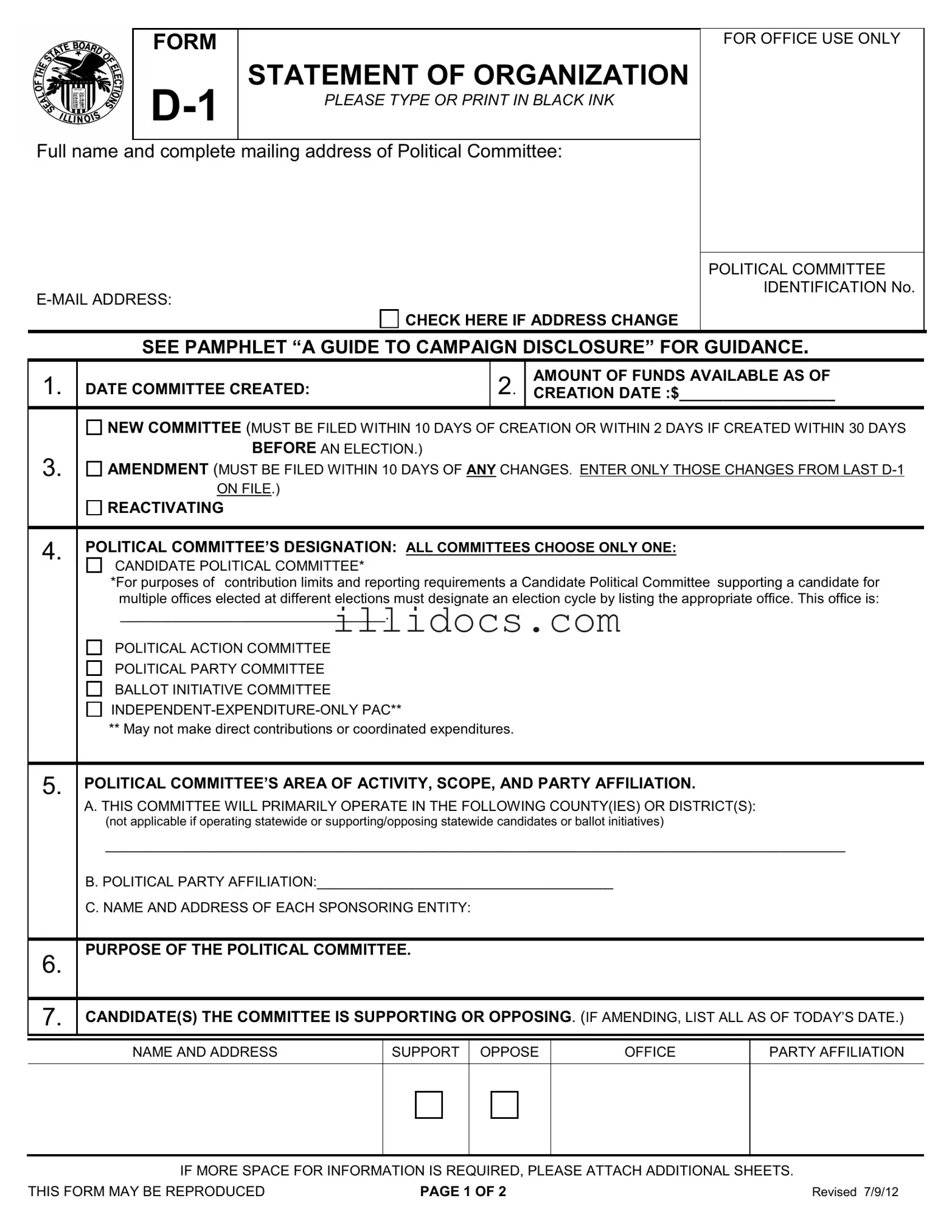What is the D 1 Statement Organization Illinois form?
The D 1 Statement Organization Illinois form is a document that political committees must file to officially register their organization with the Illinois State Board of Elections. It includes essential information about the committee, such as its name, purpose, and the candidates it supports or opposes. This form must be completed accurately to comply with state election laws.
Who needs to file the D 1 Statement Organization form?
Any political committee that wishes to operate in Illinois must file this form. This includes candidate political committees, political action committees, political party committees, and ballot initiative committees. If you are forming a new committee or making significant changes to an existing one, you are required to submit this form.
When should the D 1 Statement Organization form be filed?
The form must be filed within 10 days of the committee's creation. If the committee is created within 30 days before an election, the form must be submitted within 2 days. Additionally, if there are any amendments or changes to the committee’s information, those must also be filed within 10 days.
What information is required on the D 1 Statement Organization form?
The form requires various details, including the committee's name and mailing address, the date of creation, the amount of funds available at creation, the committee's designation, area of activity, purpose, and the candidates it supports or opposes. It also requires information about committee officers and financial institutions associated with the committee.
What happens if the D 1 Statement Organization form is not filed on time?
Failure to file the form on time can result in penalties. The Illinois State Board of Elections may impose fines for willfully failing to file or for submitting false or incomplete information. Penalties can range from $1,001 to $5,000, depending on the severity of the violation.
Can the D 1 Statement Organization form be amended?
Yes, the form can be amended. If there are any changes to the committee's information after the initial filing, such as changes in officers or financial institutions, those changes must be reported by filing an amendment within 10 days.
Where should the D 1 Statement Organization form be submitted?
The completed form should be submitted to the Illinois State Board of Elections. You can send it to their offices in Springfield or Chicago, depending on your location. You may also submit the form via fax or email, as specified in the instructions on the form.
